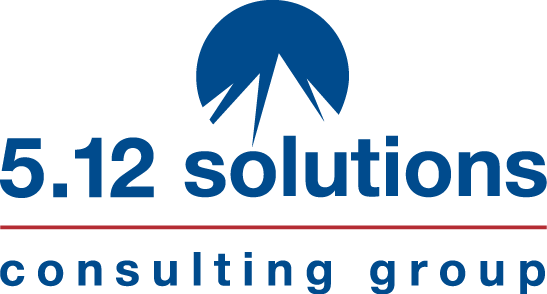I was in a coaching session with an executive recently discussing a situation she had with her CEO. She hadn’t delivered to his expectations. When my coachee asked the CEO for feedback, all the CEO could say was, “I’ll know it when I see it.”
Ugh. Not helpful.
Unfortunately this experience aligns with data regarding workplace engagement. Based on Gallup’s work with companies worldwide, only about half of employees strongly agree that they know what is expected of them at work. Similarly, according to ThriveMap, 48% of workers left a job because it wasn’t what they thought it would be.
When team members do not have clarity of what’s expected, it’s nearly impossible for them to be successful. It becomes a never-ending guessing game with one of two ultimate outcomes (1) the employee fails in her role or (2) the employee gets depleted and seeks a different role inside or outside of the organization.
Either way, the core human workplace need of Clarity is not being met. And the results aren’t pretty.
The 6 Human Workplace Needs
If you haven’t seen my last three posts, I’ve been laying out a model that we call The 6 Human Workplace Needs that will help you create a healthy, aligned and more human workplace.
Here’s a quick review.
The 4 Core Needs — needs that all people seek at a fundamental level at work.
- Connection with people
- Certainty as a result of safety
- Contributions are valued
- Clarity of the what and how
The 2 Fulfillment Needs — needs that result in meaningful and purpose-driven work.
- Challenge and growth
- Community impact
In this post, we’ll explore the fourth core need, clarity, in more depth.
What is Clarity?
Clarity is a fundamental workplace need for any person, from an individual contributor to the boss. We broadly think about clarity in two key areas, the “what” and the “how.”
Clarity of the what refers to results-oriented expectations that range from company goals to meeting outcomes. When the what is clear, the following questions can be answered:
- What are the organization’s unifying goals?
- What objectives and key results are expected at the functional and team levels?
- What are my performance objectives and key results for the quarter and/or year?
- What actions and decisions did we just decide upon at the conclusion of any given meeting?
Clarity of the how refers to behavioral norms and expectations. They range from organizational values to team agreements. When the how is clear, the following questions can be answered:
- What cultural values drive our hiring decisions?
- What behaviors does this organization reward and criticize?
- What norms guide how we run our meetings?
- What agreements enable us to engage in productive conflict?
When people have clarity of the what and the how they are much more likely to shift from surviving to thriving. They can see how their work and their behaviors connect to the bigger picture and they can act with confidence that they are focused on the right things.
Is there clarity on your team? Do people truly know what is expected of them to help drive the right kinds of business results?
The Fear Behind Clarity
I recently facilitated three different programs with senior leaders. The biggest fears that these leaders expressed in our leadership training workshop were:
The executive team is constantly changing priorities.
I don’t know where we are going.
Who has the decision rights?
What are my goals and priorities?
Regardless of how these fears show up, they boil down to one core question (and fear) — How will I succeed?
And so the guessing begins.
But when a team member has clarity on both the what and the how, it enables team members to align their work with what’s most important to the team and the organization and they understand the behaviors that are expected in the organization.
Clarity also enables the organization to hire the right people. A team member may be technically competent in her role, but not a good cultural fit. Or, a team member may be a good cultural fit, but incompetent in her role.
In a recent episode of my podcast, Sal Silvester on the Future of Leadership, I spoke with Beth Smith, the author of Why Can’t I Hire Good People? We discussed at length that one of the most common mistakes hiring managers make is hiring “good people.”
Instead of hiring good people, we should hire good employees. (Want more explanation? Check out the podcast, I think you’ll find it helpful.)
What does it take to create clarity?
There are three keys to creating clarity in the workplace.
1. Mindset
The mindset shift for most leaders is one from a problem orientation to an outcome orientation. We’ve found through surveys and our work with clients that people typically approach their work with a problem orientation. In other words, they see a problem and they fix it. They see another problem and they fix that one too. It’s a never-ending process of tension and relief as problems arise and the leader fixes them.
The leader, usually without knowing it, has a dysfunctional belief that leadership is about rescuing others instead of teaching, delegating, and coaching. They are able to conceal their leadership weaknesses with their technical skills and often do so successfully!
The shift from a problem orientation to an outcome orientation requires leaders to broaden their perspective and take a more systematic approach to operate at the right level. It’s an approach that requires leaders to (1) think beyond their own functional area, (2) consider a long-term view, and (3) build people capacity.
2. Skillset
To successfully create clarity in your organization, leaders need three core skillsets.
One, they need a strategic thinking skillset to enable the creation of unifying goals that span the entire organization.
Second, they need the emotional intelligence to be able to stay in conversation with peers with competing priorities.
Third, they need skills to provide feedback and feedforward to their people.
3. Daily Habits
A leader’s mindset and skillset are demonstrated through what they do on a day-to-day basis. Some examples of daily habits that create clarity include:
Establishing the what
- Ensure roles are clear.
- Define unifying goals that are linked to team objectives and key results.
- Confirm that each individual has input into and clarity of their individual objectives and key results.
- Create transparency by sharing goals publicly.
- Establish team norms so people know what is expected in meetings.
- Conduct regular 1-1s to provide feedback and feedforward with all team members.
Establishing the how
- Meet with all new employees to help them understand the culture, values and norms.
- Onboard new team members by sharing team norms, productive conflict expectations and other team agreements.
- Share personality styles so that team members understand each other’s tendencies and preferences. We often use the Everything DiSC Workplace profile alongside our Team Acceleration program to help teams understand their individual and collective styles in conflict and how to adapt to other when things get tense.
Create Clarity and Stop the Guessing
No one should have to guess about what is expected from them in the workplace and they certainly shouldn’t be guessing about how they are performing.
If you find that your leaders are struggling to set clear expectations and provide the feedback and coaching that your employees need, our Ignite Leadership Program might be a good fit for your organization. Additionally, we just launched our Human Workplace Needs Culture Assessment. You can download it below to better understand the current state of your team and identify ways to create an increasingly aligned, healthy, and human work environment.

